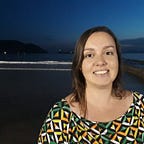Meet the ReefBank Project, generating new coral babies for the South Atlantic
Coral reefs are rare ecosystems. They are only present in less than 0.1% of the seafloor, which means they only cover an area of approximately 280 thousand km². Coincidentally, this is the same area that the state of Rio Grande do Sul occupies in Brazil, a fun fact given to me by Dr. Leandro Godoy at the 1st National Congress of Ocean Protectors of Brazil.
Now, you may be asking why I’m sharing this tidbit. Well, Dr. Godoy leads the Reefbank Project whose home is the Federal University of Rio Grande do Sul (UFRGS). Reefbank is the first initiative of its kind in the region, combining cryopreservation biotechnology with coral reefs to generate a sperm and egg bank that will allow future artificial reproduction of key species in the South Atlantic.
Working so far away from the nearest coral reef, ReefBank relies on their partnership with Projeto Coral Vivo, an initiative financed by Petrobras, and the support from the National Museum of Brazil and the Federal University of Rio de Janeiro (UFRJ).
The first field expedition took place in October 2018 over reefs located in the state of Bahia, Northeastern Brazil. Samples were taken from two endemic species: Mussismilia hispida and Mussismilia harttii. These massive coral species were prioritized in the project because they are among the most important reef builders in the South Atlantic.
Professor Godoy explained that with increasing reef degradation worldwide in face of local impacts, such as overfishing and pollution, and climate change, in vitro reproduction of corals may become an important tool for the recovery of these ecosystems, by repopulating reefs with important builder species.
However, before they can start making coral babies, the ReefBank group must understand the material they are working with. This was the first time that reproductive cells (also called gametes) were collected from these species, which brought to light new questions that needed to be answered. Over the past months, they have assessed the quality of the material collected, which involves all sorts of cell characterization: counting how many live cells are present in the sperm, their morphology, longevity, sensitivity to temperature, among other traits.
All this laboratory work has started to generate very interested results. For example, sperm cells of Mussismilia hispida were shown to survive up to 18 hours in seawater at environment temperature. This provides important insight as to the distance these cells can travel when released during the reproductive season, between September and November.
In addition to all this field and laboratory work, the ReefBank Project is also focused on bridging the gap between academia and society through social media. The initiative currently delivers quality information to thousands of people interested in learning more about coral reefs, marine science and biotechnology (in Portuguese and in English!). If you’d like to be part of their shoal of followers, check out their Facebook and Instagram profiles:
Originally published at http://reefbites.wordpress.com on May 11, 2019.
